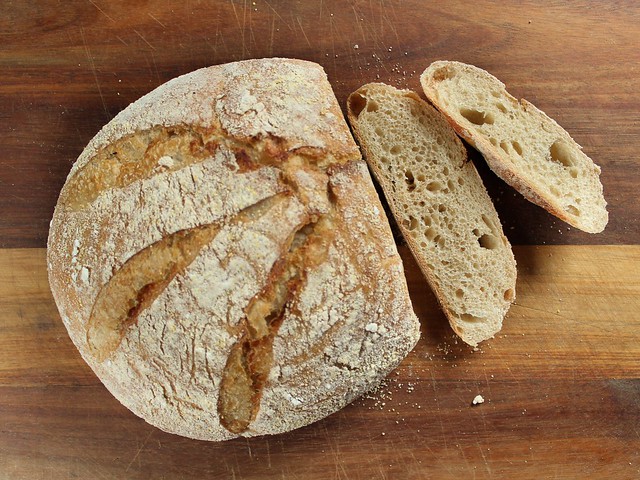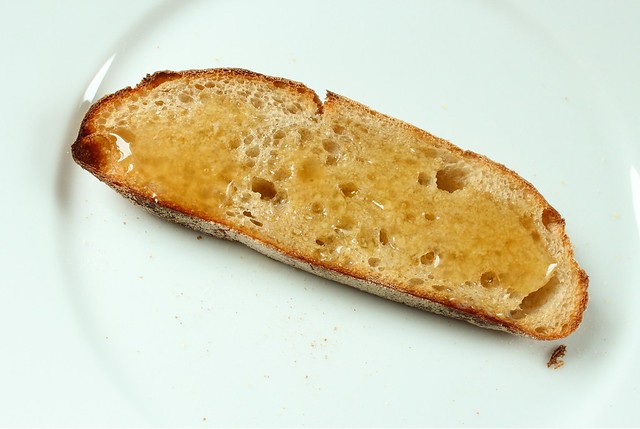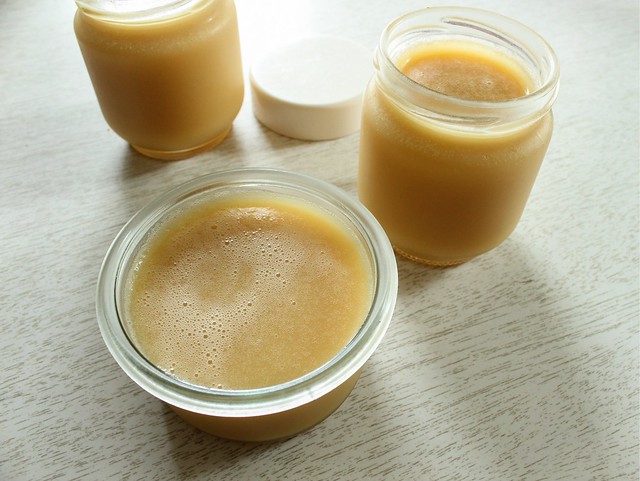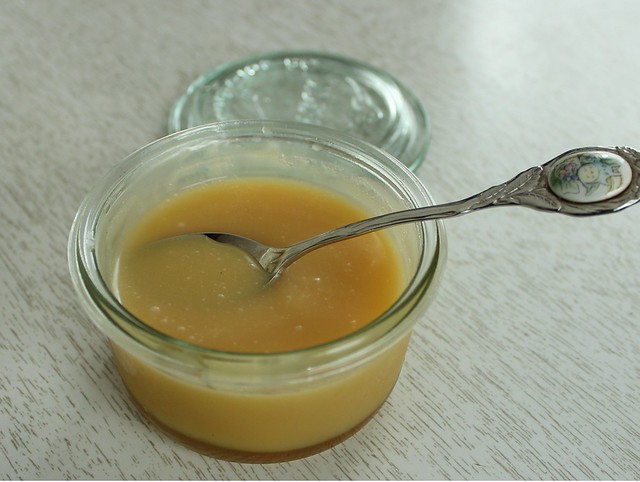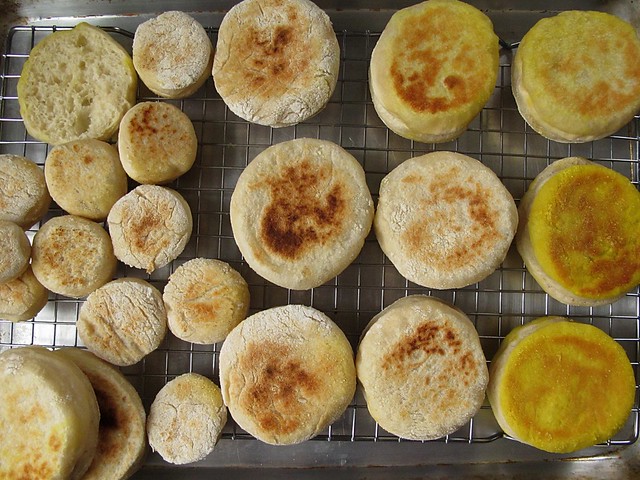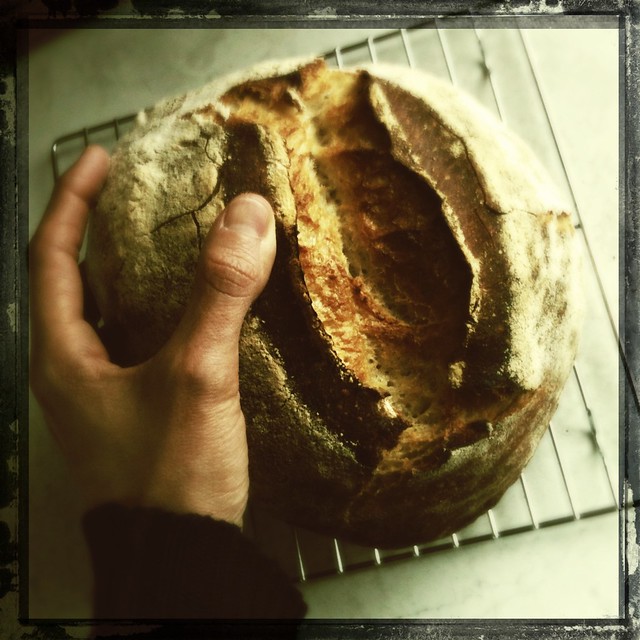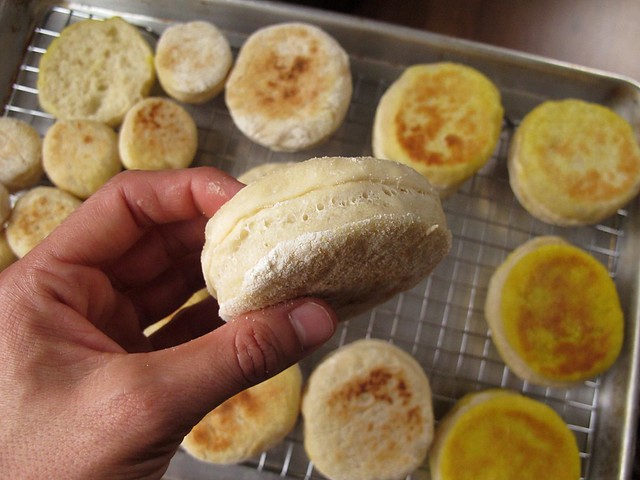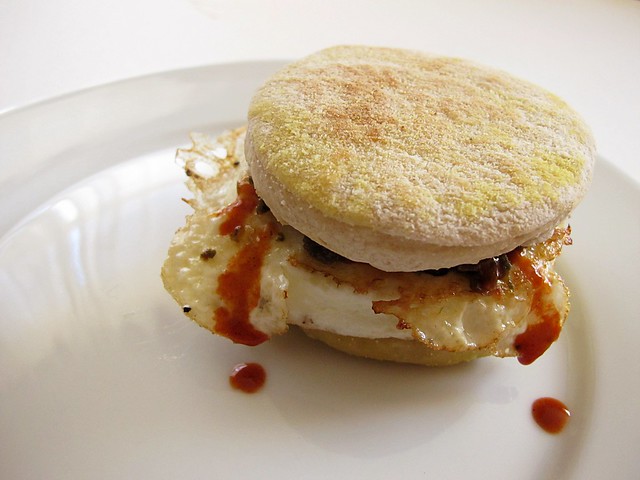The other day, I fed up my sourdough starter so much that it expanded out of the glass container it was housed in and spilled down the sides and onto the counter. For some reason, that generous morning surprise cued my need to make English muffins. The recipe I most like for English muffins comes from Northwest Sourdough, and uses a whopping 453 g. of well fed starter. I've made it a number of times, and it is reliably good. What I haven't done before is form it into a loaf and bake it:
I did that with the scraps after I cut a dozen traditional muffins, and it was a marvelously good idea. I thought I might have added too much additional flour as I struggled to get it to form a round of dough that was dry enough to handle. I didn't proof in the fridge, just let it stand for a few hours at room temperature until it seemed to pass the finger-dent test. (The dough should slowly spring back and fill in, telling you that the yeast has slowed its action enough and is fully proofed. If it springs back quickly, the yeast still has some work to do.) Then, I took a chance on scoring it and baking it in a cast iron pot at 475 degrees. It was done in a mere 25 minutes, about 18 with the lid on, the remainder with it removed.
The scraps of muffins are always a challenge to re-roll, so I was glad this worked as well as it did. I froze most of the muffins, and went to town making the best toast ever: pleasantly sour and with perfect, even texture.
Then yesterday morning, I was talking with my friend E on the phone - which by the way seems like such a refreshing thing to do as most communication is done via text or email lately. How nice to hear a phone ring and a "good morning" in true human tones! Anyway, we were talking about quince, which I will be getting my hands on tomorrow. She said she found some this year in a neighborhood tree, that they are delicious poached, and she ate them all that way pretty much. Poached and with cream, because everything is better with cream. I had to agree. And the English muffin bread made me think of the cream I had to use up and this recipe for "ambrosia" I had seen a few weeks ago.
Now there are things that you avoid making because you know that they are dangerous. Things that don't stand a chance due to the deliciousness of their combined components. That is what this recipe made me think of. Originally, it called for an amount of sugar; but why add sugar to honey? Honey is honey and worthy of no adornment. But if you are going to adorn it, why not with butter and cream? Everything is better with cream.
Honey Butter Cream (adapted from One Good Thing)
Honey Butter Cream (adapted from One Good Thing)
- 1 c. honey
- 1/2 c. heavy cream
- 6 oz. room temperature, unsalted butter
- pinch of kosher salt
- 1 t. vanilla
When tasting a spoonful of honey and butter and cream, your mind races to find suitable accommodations for it. Granted, you could eat the whole jar(s) by the spoonful and no one would judge. But putting it on ice cream or plain yogurt, spooning it into the black coffee I generally don't mess with (remember the buttered coffee trend? This one-ups that for sure.), or topping a perfectly ripe pear or apple slice is so much better. It's a good thing too, since I think the heavy cream gives this a shelf life of about a week - a week that won't be a problem with so many sweet options...

